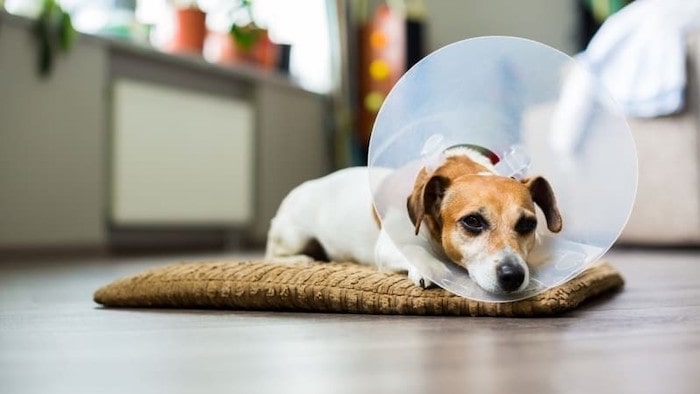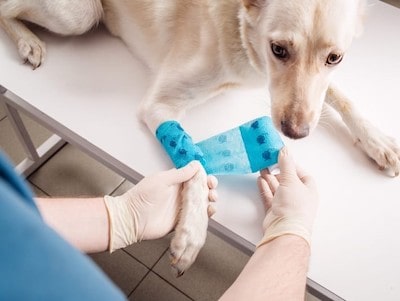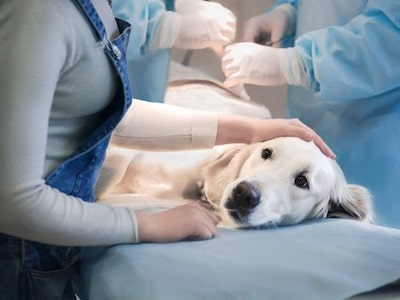When we bring our furry companions home after surgery, we expect them to be on the road to recovery. However, it can be disconcerting to witness our beloved dogs trembling or shaking after undergoing a surgical procedure. As pet owners, we naturally want to understand the reasons behind this behavior and ensure our dogs are comfortable during their healing process.
In this article, we will delve into the topic of why dogs shake after surgery, exploring the potential causes behind this trembling behavior. Whether it’s related to anesthesia, pain, anxiety, or other factors, we’ll provide insights to help you better comprehend this post-operative phenomenon and offer practical tips on how to support your dog through their recovery.
So, if you’ve ever wondered, “Why is my dog shaking after surgery?” read on to gain a deeper understanding of this common occurrence and learn how to best care for your furry friend during this crucial time.
Common Causes of Shaking After Surgery
There are several reasons why dogs shake after surgery. Most of them are harmless, while some require immediate medical attention. Here are some of the most likely causes of shaking after surgery:
1) Anesthesia: Anesthesia is the drug used to put your dog into deep sleep during surgery so they don’t experience any pain or discomfort. However, anesthesia can have some unintended consequences, such as reducing your dog’s blood pressure, heart rate, and body temperature.
As the anesthesia wears off, your dog may shiver or tremor in an attempt to create heat and return to normal body temperature. This is one of the most frequent reasons of shaking following surgery, and it normally goes away within a few hours.
2) Stress: Surgery can be a stressful event for your dog, especially if he or she is unfamiliar with being away from you or in an unfamiliar environment. Adrenaline and cortisol, which are hormones that prepare your dog for fight or flight, can be released in response to stress.
These hormones might cause your dog to shake or tremble as a coping mechanism. Depending on how worried your dog is, stress-induced shaking may occur before or during operation.

3) Pain: Another common reason of shaking after surgery is pain, especially if your dog underwent a big or invasive treatment that involved cutting, stitching, or removing tissue. Your dog may pant, whimper, or vocalize more than normal if he is in pain.
Your veterinarian should prescribe pain medicine for your dog after surgery, but it may not always be enough to control their discomfort. If you believe your dog is in discomfort, contact your veterinarian for guidance on how to treat it.
4) Hypothermia: Hypothermia occurs when your dog’s core body temperature falls below the usual range of 100-102°F (37.8-38.9°C). This can occur if your dog loses too much heat during surgery as a result of anesthesia, exposure, or blood loss.
As a result of hypothermia, your dog may shake uncontrollably in an attempt to warm up. Other problems of hypothermia include low blood sugar, low blood pressure, a sluggish heart rate, and organ failure. If you fear your dog has hypothermia, cover them in blankets and take them to the doctor as soon as possible.
5) Infection: Infection is a rare but serious complication that can occur after surgery if bacteria enter the wound or the bloodstream. Infection can cause inflammation, fever, swelling, redness, pus, and odor around the incision site. It can also make your dog feel sick and weak and cause them to shake or shiver as a sign of illness.
If left untreated, infection can be fatal, therefore you should regularly check your dog’s wound for any indications of infection and get in touch with your veterinarian if you do.
How to Help Your Dog Stop Shaking
Shaking after surgery is usually normal and temporary, but it can still be uncomfortable and distressing for your dog. Here are some ways you can help your dog stop shaking and feel more relaxed and comfortable after surgery:
1) Keep them warm: One of the simplest ways to help your dog stop shaking is to keep them warm and cozy. You can do this by providing them with a soft bed, blankets, heating pads, or hot water bottles.
You can also cuddle with them or hold them close to share your body heat. However, be careful not to overheat them or cover their face or nose with anything that could obstruct their breathing.
2) Keep them hydrated: Another way to help your dog stop shaking is to keep them hydrated and replenish their fluids. You can do this by offering them fresh water frequently and encouraging them to drink.
You can also add some low-sodium chicken broth or canned tuna water to their water bowl to make it more appealing and tasty. However, avoid giving them milk or dairy products as they could upset their stomach.

3) Keep them calm: Stress can make your dog shake more after surgery, so you should try to keep them calm and relaxed as much as possible. You can do this by providing them with a quiet and comfortable environment, away from loud noises, bright lights, or other pets or children.
You can also play some soothing music, use aromatherapy, or give them some gentle massage or petting to help them relax. However, avoid forcing them to interact with you or anyone else if they are not in the mood or want to be left alone.
4) Give them pain medication: Pain can also make your dog shake more after surgery, so you should give them pain medication as prescribed by your vet. You should follow the dosage and frequency instructions carefully and never give your dog any human painkillers, such as aspirin, ibuprofen, or acetaminophen, as they could be toxic or fatal for your dog.
You should also monitor your dog for any signs of adverse reactions to the pain medication, such as vomiting, diarrhea, lethargy, or loss of appetite, and contact your vet if you notice any.
When to Seek Professional Help for Your Dog’s Shaking
While post-surgery shaking in dogs is usually normal and temporary, it can sometimes indicate a serious problem that requires immediate veterinary attention and treatment.
Some of the signs and indicators that your dog needs urgent medical attention for their shaking are:
- Excessive bleeding: If your dog is losing a lot of blood from their incision site or elsewhere, they might be at risk of shock or anemia. You should apply pressure to the bleeding area with a clean cloth or bandage and take your dog to the nearest emergency clinic as soon as possible.
- Infection: If your dog has a fever, pus, foul odor, or other signs of infection around their incision site or elsewhere, they might have a bacterial or fungal infection that can spread throughout their body. You should clean the infected area with a mild antiseptic solution and take your dog to the veterinarian as soon as possible.

- Inflammation: If your dog has swelling, redness, heat, or pain around their incision site or elsewhere, they might have an allergic reaction or an inflammatory condition that can impair their healing process. You should apply a cold compress to the inflamed area and take your dog to the veterinarian as soon as possible.
- Nerve damage: If your dog has paralysis, numbness, tingling, or loss of sensation around their incision site or elsewhere, they might have nerve damage that can affect their mobility and function. You should gently massage the affected area and take your dog to the veterinarian as soon as possible.
- Seizures: If your dog has convulsions, spasms, twitching, or loss of consciousness after surgery, they might have seizures that can damage their brain and nervous system. You should protect your dog from injuring themselves during a seizure and take them to the nearest emergency clinic as soon as possible.
FAQs
While shaking after surgery is generally a normal response, it’s important to assess the severity and accompanying symptoms. Mild shaking or trembling is usually nothing to be overly concerned about, but if it becomes severe, your dog shows signs of distress, or if there are other abnormal symptoms, it’s crucial to consult your veterinarian for proper guidance and evaluation.
It is not uncommon for dogs to have a decreased appetite or refuse food and water immediately after surgery. The effects of anesthesia, pain medications, and the stress of the procedure can contribute to temporary loss of appetite. However, if your dog continues to refuse food or water for an extended period, it is important to contact your veterinarian for guidance, as dehydration and lack of nutrition can impede the healing process.
Yes, it is generally recommended to restrict your dog’s activity during the post-operative period, especially if they are shaking. Rest is crucial for proper healing, and excessive activity can potentially exacerbate pain or cause injury to the surgical site. Follow your veterinarian’s instructions regarding exercise limitations, leash walking, and other activity restrictions to ensure a smooth recovery for your dog.
While shaking after surgery can be a common occurrence, there are some preventive measures that can help reduce the chances or severity of shaking. These include discussing pre-operative anxiety management with your veterinarian, ensuring proper pain management post-surgery, maintaining a calm and stress-free environment, and providing comforting items such as familiar bedding or toys to ease your dog’s anxiety during the recovery period. It’s always best to consult your vet for personalized recommendations based on your dog’s specific needs.
Well, That’s a Wrap
Understanding why your dog may shake after surgery is essential for providing them with the necessary care and support during their recovery. From the effects of anesthesia to pain, anxiety, and the stress of the surgical procedure itself, there are several factors that can contribute to this shaking behavior.
While mild shaking is often normal, it’s important to monitor your dog’s overall well-being and seek veterinary advice if the shaking persists or is accompanied by concerning symptoms.
By creating a calm and comfortable environment, following your veterinarian’s instructions for pain management, and offering reassurance and gentle interaction, you can help alleviate your dog’s shaking and promote a smoother recovery. Remember to be attentive to any warning signs that may indicate a more serious problem and promptly seek professional guidance if needed.
Each dog’s recovery journey is unique, so it’s crucial to consult your veterinarian for personalized recommendations and guidance tailored to your pet’s specific situation. With patience, care, and proper support, you can help your dog navigate the post-surgery period with minimal discomfort and ensure a successful and speedy recovery.

Ellis is a retired veterinary technician and full-time contributor at DogLovesBest. He likes writing about pet health care tips and reviews the products that are useful for fidos on a daily basis.
Ellis also guardians a Siberian husky, Nova, and a cat named Shilly. They all live happily with his wife Ammy, and both the dogs on a seaside apartment in Queens, NY.
